Men’s fashion in the 1950s exuded an undeniable air of sophistication and timeless elegance. It was an era that celebrated classic style, where refined tailoring and impeccable attention to detail were the hallmarks of every well-dressed gentleman. Every piece of men’s clothing carefully chosen to create a look that exuded confidence and refinement.
The fashion landscape was dominated by sleek suits, crisp dress shirts, and perfectly knotted ties, all. Bold patterns and vibrant colors were also embraced, adding a touch of daring flair to the overall aesthetic. 1950s was an era that celebrated the art of dressing well, where men took pride in their appearance and embraced a timeless sense of style that continues to inspire modern fashion trends.
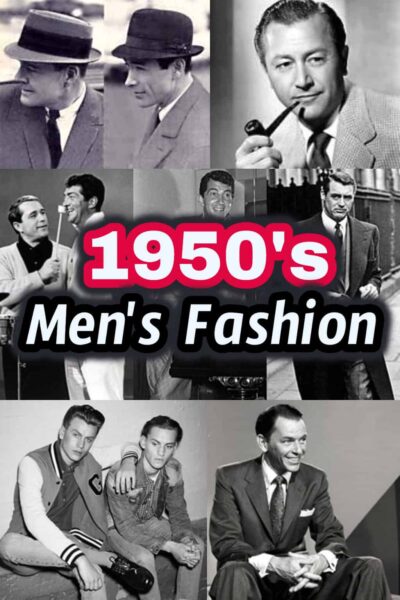
Men’s fashion in the 1950s was heavily influenced by advertising, Hollywood films, and popular television shows. Advertisements from that era often featured well-dressed men as role models for consumers. Fashion icons like Frank Sinatra, Dean Martin, and Cary Grant were also very influential in shaping men’s conservative fashion trends during the 1950s.
There were still subcultures influenced but the likes of Beatniks and Teddy Boys who adopted more rebellious and unique styles.
Here are some key elements of 1950s men’s fashion:
Suits
Suits were a staple of men’s fashion in the 1950s. They were typically cut fuller and more comfortable compared to later decades. The emphasis was on proper tailoring to make any man’s body type look good. Dark colors like dark blue, dark brown, and charcoal were common for suits.
Men usually attended cocktail parties in the 1950s typically wore semi-formal or smart-casual attire. This often included a well-tailored suit in dark or muted colors, such as charcoal or navy. They paired the suit with a dress shirt, often white or light-colored, and a tie that added a touch of sophistication.
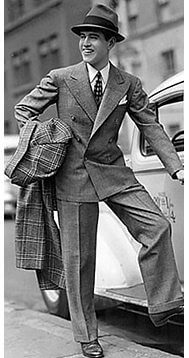
These picture are far more mainstream view of how men actually dressed. I’ve started with someone who typified looking sharp.
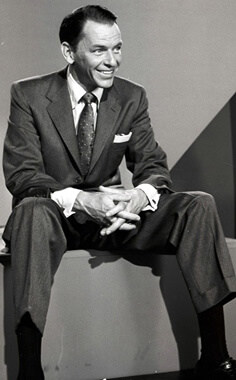
Credit: Getty Images – Frank Sinatra was the 50’s coolest cat
Suits were cut fuller and more comfortable. The prevailing design inspiration was being able to take virtually any man’s body type and make it look good through proper tailoring. This style trend would last until the 2000’s when tight fitting suits would gain popularity.
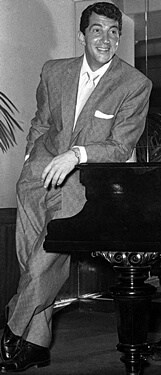
Credit: Getty Images – Rat Pack member and singer Dean Martin
Ties
In the 1950s, men’s ties played a prominent role in defining their style. Ties were typically uniform and dark in color, complementing the era’s conservative fashion. Common tie styles included solid colors and subtle patterns like stripes or small geometric designs. These ties were worn with a variety of collar styles, such as the wide spread collar for a formal look or the button-down collar for a more casual appearance.
Younger men often embraced slightly wider ties, reflecting a sense of rebellion and individuality. Some ties featured bolder patterns or motifs, though these were more the exception than the norm. The knot of choice for tying ties was the Windsor knot, known for its symmetry and formal appearance.
Sport Coats
Sport coats and slacks outfits offered a bit more color variety and were a popular choice for less formal occasions.
These jackets were typically made from durable materials like tweed or wool and came in various earthy tones and patterns. The sport coat was versatile, suitable for both business-casual and leisurely occasions.
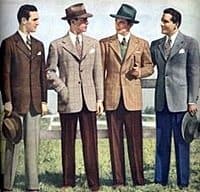
A distinctive feature of 1950s sport coats was their use of a slightly wider, more relaxed cut compared to the slim-fit suits of later decades. They often had two or three buttons, notch lapels, and flap pockets. This design allowed for comfortable layering over stretch dress shirts and ties.
Workplace Attire
Men in the 1950s wore conservative clothes to the office. The rule of thumb was that the more important your job was, the more expensive your clothes should be. It was essential to look and act like an executive.
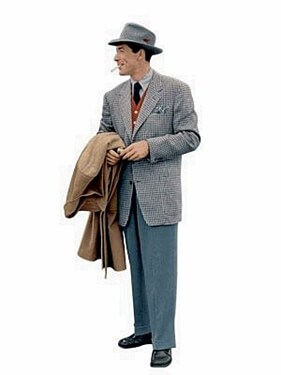
Credit: Esquire Magazine
Notice both of these illustrations show the men smoking cigarettes.

Credit: Esquire Magazine
When men weren’t wearing jackets or suits they were wearing sweaters or vests. Some businesses would allow the man to wear a sweater with a tie, sort of a 1950s “casual Friday” thing.
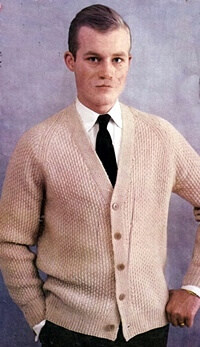
Seasonal Attire
Men followed seasonal attire rules, but with less variation compared to women. Summer suits made of lighter-weight fabrics were popular for warm weather.
This guy was perfectly dressed for the daytime outdoor party he was at.
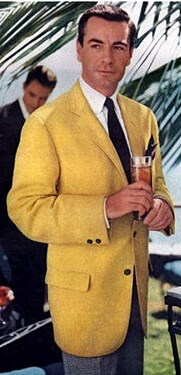
While Trench coats were also a popular outerwear choice for men in the 1950s in the winter during rainy or colder weather. They provided a classic and stylish look.
Casual Wear
James Dean showed how to pull off a very cool casual looking style and made quite a few women swoon at the same time.
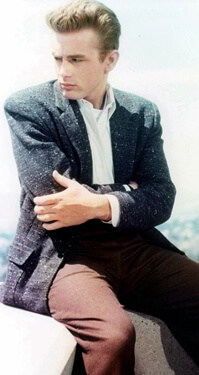
Credits: Getty Images
Yes, there were young men at school who looked just like the Fonz, but not many and they didn’t have motorcycles. And truth be told, most girls wouldn’t have gone out with any of them anyway.
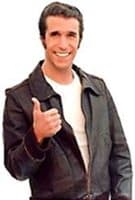
School Style (High School)
These two guys are probably seniors
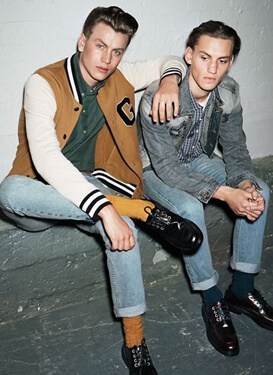
Here you see the kind of guy you’d introduce to your parents. A conservative fella. Which was how most guys looked in the Fifties. If you want to know how men dressed, you need to think about Ritchie and Mr. C – not the Fonz.
This 1950s men’s fashion look was often called “Ivy League” or preppy and was definitely the preferred look if your date was meeting your Dad for the first time.
The cardigan sweater seen here was a popular style which was used for the “letter” sweater so cherished among athletes.

Cardigan sweaters also made for a nice casual look. These guys are not at the office and they are the perfect showcase for the 1950s casual look.
They are two famous 1950s crooners, Dean Martin and Perry Como.

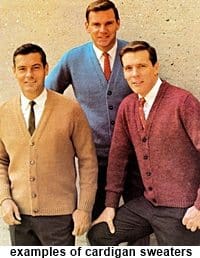
Western Style
Cowboy look became popular for a while and plaid was a style that just hung on. These casual looks were reserved for weekend wear only.
Even Dad wanted to be a cowboy. Influenced by the dominance of the TV Western, everybody went a little Yehaw. Although only kids wore the cookskin caps, menswear was adapting nicely to the “home on the range” look.
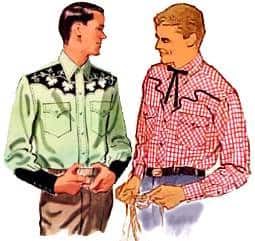
Military Style
Many men in the 1950s had served in World War II, which influenced fashion.
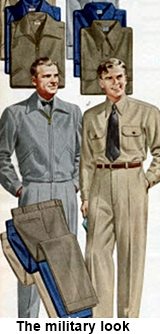
Vests
Vest were popular because of their versatility. They were worn under suit or sport coats but could also be worn by themselves for a more casual business look.
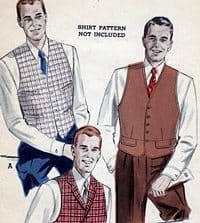
Hats
Hats were a must for men in the 1950s. There were various hat styles for different occasions, and men often owned several hats.
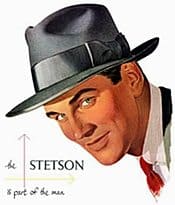
You were not dressed for work without a hat. They had hat only stores. I remember my Dad had a hat rack in the closet.
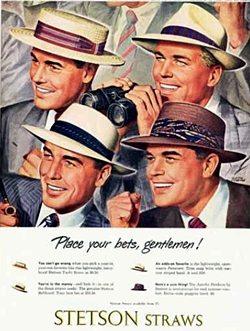
Straw hats were popular for more casual outings but would not be worn to work and not at night.
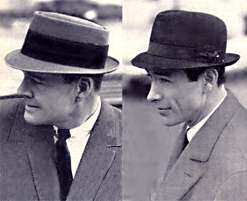
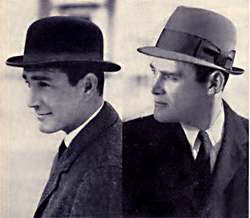
Cary Grant was the George Clooney of the 1950s, so much can be learned from his style.
Other Accessories Like Cufflinks, Gloves, Pocket Squares & Pipe
Men paid attention to accessories, including coordinated ties, handkerchiefs, socks, and wingtip shoes. Shoe care was essential, and men often had shoeshine kits at home. Cufflinks were a common accessory for men when wearing dress shirts with French cuffs. 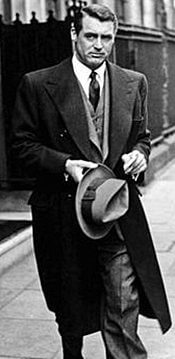
Men often wore gloves, particularly when dressing up for formal events. Leather gloves were common, and they added a touch of sophistication to an outfit.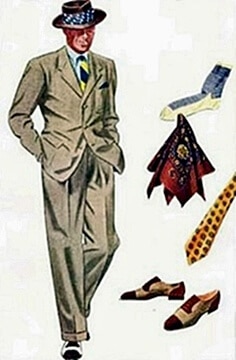
Pocket squares were a stylish addition to suit jackets and sport coats. They came in various colors and patterns and were folded neatly in the breast pocket.
Smoking a pipe was a common practice in the 1950s and was seen as distinguished. Health risks of smoking were not fully understood at the time.
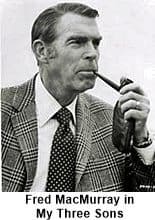
Robert Young on “Father Knows Best” smoked one and how much more ‘Middle-America’ can you get.
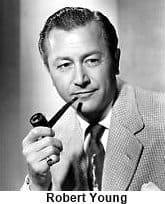
Summer / Beach Style
In the summer, men enjoyed pool and beach parties, wearing relaxed yet stylish clothing suitable for the occasion.
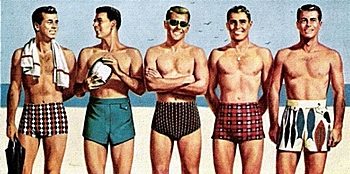
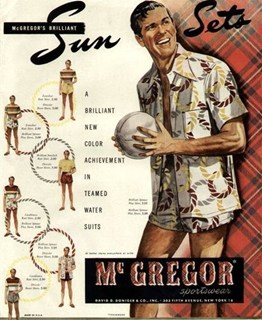
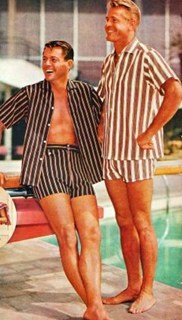
If you weren’t swimming you might wear something like this.
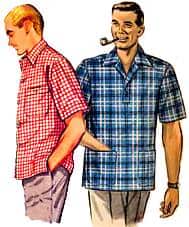
Hairstyles
In the 1950s, men’s hairstyles were marked by a focus on clean and well-groomed looks. The iconic “Ivy League” or “crew cut” was prevalent, with short sides and back and slightly longer hair on top. This style exuded a tidy and traditional appearance, known for its simplicity and easy maintenance.
Additionally, the pompadour gained immense popularity during this era. It involved styling the hair up and back, creating volume and height at the front, and was famously worn by Elvis Presley.
Another notable style was the “ducktail” haircut, characterized by the back of the hair forming a V-shape resembling a duck’s tail. It was a more rebellious and edgy hairstyle, often embraced by younger men as a departure from the cleaner-cut looks of the time.
These diverse hairstyles reflected the overall sense of sophistication and conformity in 1950s men’s fashion, while the ducktail added a touch of rebellion and individuality to the mix. Hair products like pomade were commonly used to achieve the desired hold and shine for these hairstyles.
Materials
Men’s clothing in the 1950s was mainly made from durable and traditional materials. Wool was common for suits and outerwear, offering structure and comfort. Tweed, known for its earthy tones and patterns, was favored for sport coats. Cotton was used for shirts and trousers, providing breathability. Denim jeans gained popularity, especially among younger generations. Leather was used for accessories like belts, shoes, and gloves. High-quality materials and precise tailoring defined the timeless style of 1950s men’s fashion.
Collar Styles
Collar styles in 1950s men’s fashion were notable for their role in defining the appearance of dress shirts and suits. The wide spread collar, characterized by broad, angled points, was a common choice for a sophisticated look when wearing suits. In contrast, the button-down collar, featuring small buttons to secure points, was favored for casual dress shirts. The straight point collar offered a clean and versatile appearance suitable for various occasions.
Younger men often adopted the distinctive club collar with its rounded ends, adding a touch of individuality. The wingtip collar was reserved for formal wear and tuxedos, designed to accommodate bowties. The tab collar, fastened with a small tab, created a neat and sleek look, frequently paired with ties. These collar styles allowed men to tailor their attire to different settings, contributing to the diversity of 1950s men’s fashion.
Footwear
Footwear for men in the 1950s was characterized by classic and polished styles. Wingtip shoes with decorative perforations were popular for formal occasions. Loafers, particularly penny loafers, offered a more casual option. Saddle shoes, known for their contrasting colors, added playfulness to outfits, especially among younger men. 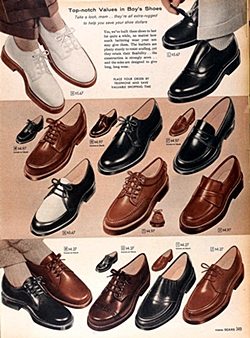
No sandals or flip-flops here. Shoes were expensive and men took care of them. My Dad had his lined up in the closet with shoe trees in every pair and they were shined.
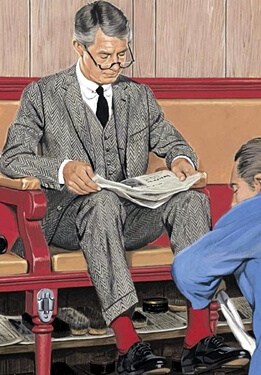
There were shoe shine chairs on every corner downtown, airports, train stations pretty much anywhere you were dressed for business.
You also had a shoeshine kit at home to keep up with those investments.
You can see that the 1950s men’s fashion was characterized by a sense of formality and attention to detail, with an emphasis on classic and timeless style. It was a decade that valued a well-dressed and polished appearance for men in various aspects of life, from work to leisure activities.

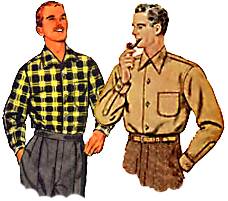
I’m trying to find a 50’s shoe made popular by teenagers.They had a slide mechanism that when opened allowed you insert your foot. When you closed it the shoe tightened around your foot. Always in black.
Hi Thom – I think the shoes are called “Buckle Shoes” or “Buckle Loafers”. The 1950s saw the popularity of them among teenagers. These shoes featured a unique buckle mechanism that allowed easy foot insertion and tightening, usually in classic black. The fact that they didn’t really have a distinctive name makes it hard to search for them. Fashion items from that era didn’t typically have standardized model numbers. To find vintage 1950s buckle shoes you probably want to search eBay for “vintage 1950s buckle shoes” and other similar terms.
you spelt favoured wrong babes you forgot the ‘u’ in the material section.
‘Merica 😉
You said “No sandals or flip-flops her.” but meant here
Thanks! I fixed it!!